Extreme Corals News and Updates
Overview of Coral Types and Care Guidelines
LPS, SPS, and Soft Corals Demystified – Care Tips and Reef Tank Hazards Unveiled
Unlock the secrets of coral care with our in-depth guide! Explore the distinctions between LPS, SPS, and Soft Corals, alongside essential tips for nurturing each species. Discover the potential hazards endangering your reef tank and proactive measures to safeguard your underwater ecosystem. Elevate your marine aquarium expertise now
by scott Shiles • April 05, 2024
Reef Tank Maintenance, Reef Tank Equipment, All Corals
Understanding Coral Types
Soft Corals:
Soft corals are a diverse group of corals
known for their flexibility, vibrant
colors, and unique shapes. Unlike hard corals, which build a rigid calcium carbonate skeleton, soft corals have a
fleshy, flexible structure. They are classified as octocorals, meaning they have eight-fold symmetry
Xenia
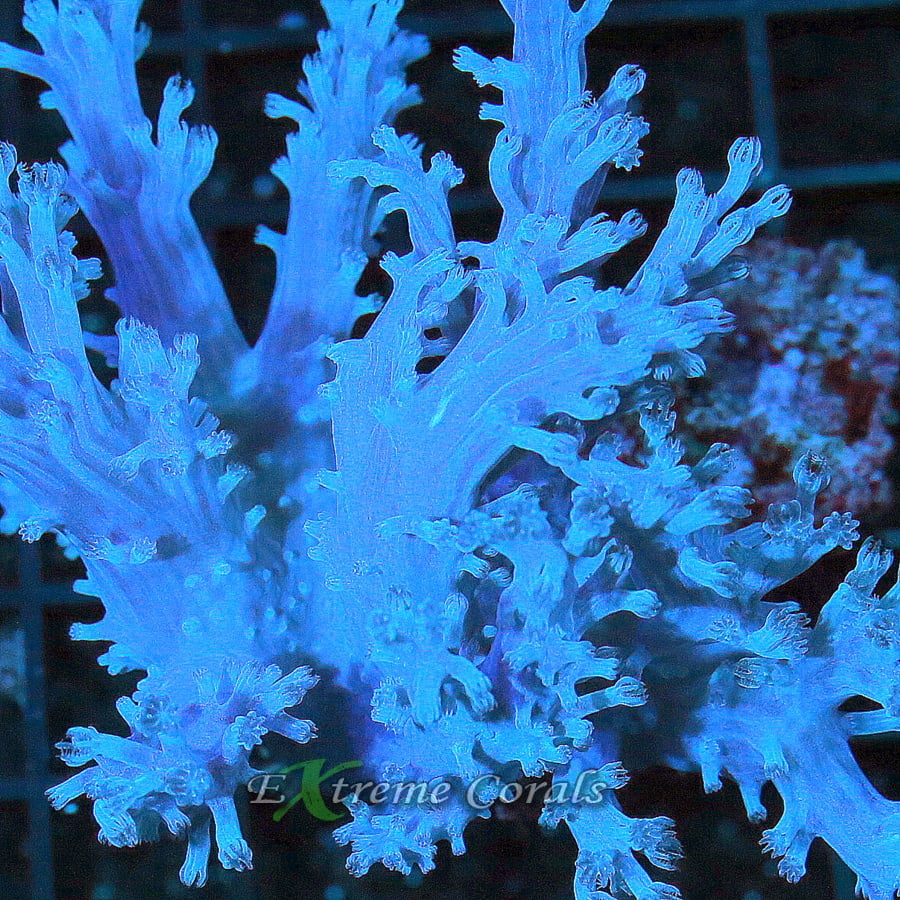
Care Requirements
Xenia corals thrive in moderate to high flow and low to moderate light conditions.
Stable water parameters with alkalinity levels between 8 and 12 dKH, calcium levels between 400 and 450 ppm, and
magnesium levels
between 1250 and 1350 ppm are essential for their health and growth. Regular water changes help maintain water
quality.
Propagation
Xenia corals reproduce rapidly through a process called pulsing, where new polyps form and bud off from the
parent colony. Fragments can also be used for propagation by attaching them to rock or substrate
Unique Characteristics
Xenia corals exhibit rhythmic pulsing movements, giving them an otherworldly appearance in the
aquarium. Their tentacles can vary in color from green to brown to pink, adding visual interest to the tank
Mushroom Corals (Rhodactis, Discosoma)
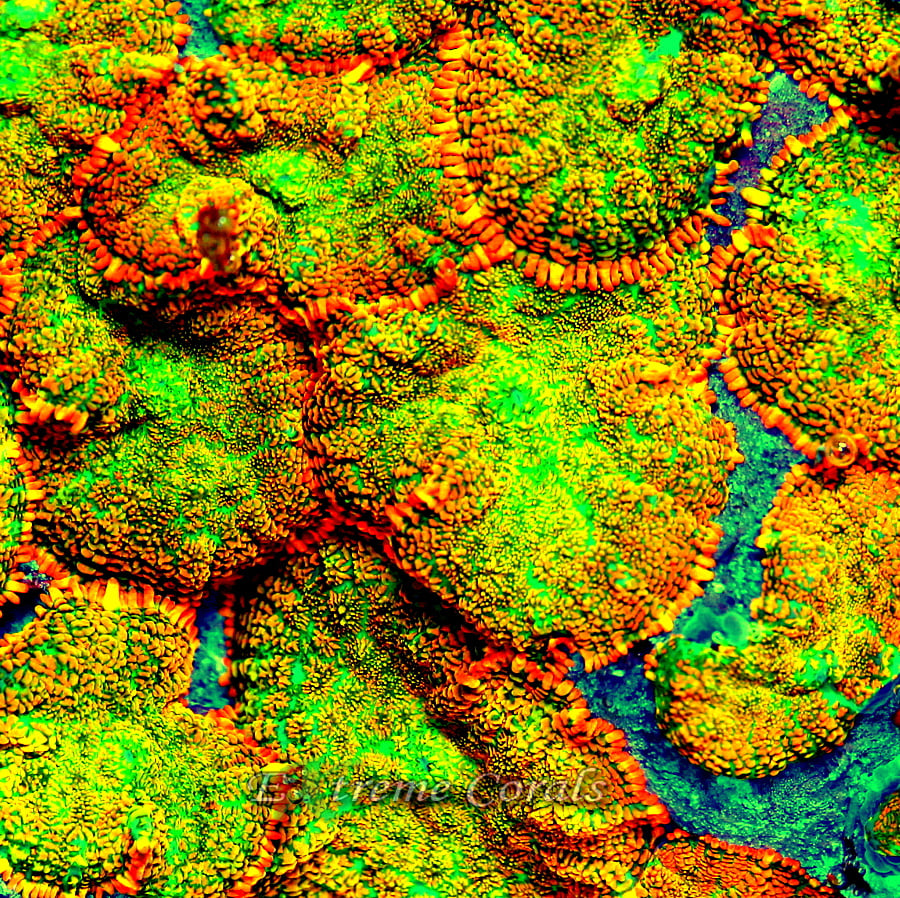
Care Requirements
Mushroom corals are adaptable to various lighting and flow conditions, making them suitable for
beginner reef aquarists. They prefer stable water parameters with alkalinity levels between 7 and 12 dKH, calcium
levels between 380 and 450 ppm, and magnesium levels between 1200 and 1350 ppm.
Propagation
Mushroom corals reproduce readily by releasing daughter polyps. Fragments can also be used for propagation by
attaching them to rock
or substrate. They can be divided with a sharp knife or razor blade.
Unique Characteristics
Mushroom corals come in a wide range of colors and patterns, including solid colors, stripes, spots, and mottling.
They can be solitary or form colonies, covering rocks and substrate in dense mats.
Leather Corals (Sarcophyton, Lobophytum):
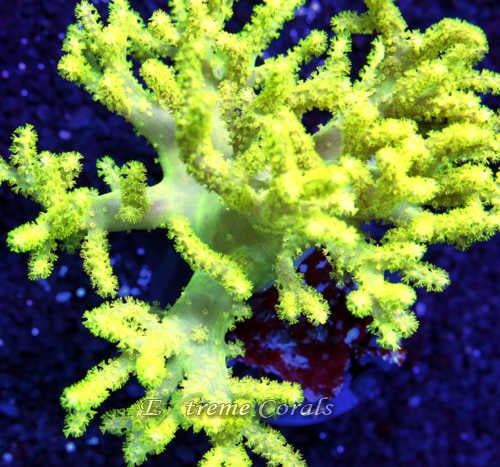
Care Requirements
Leather corals prefer moderate flow and low to
moderate light conditions. They require stable water parameters with alkalinity levels between 7 and 11 dKH,
calcium levels between 380 and 450 ppm, and magnesium levels between 1200 and 1350 ppm.
Propagation
Leather corals can be propagated by carefully cutting them into smaller fragments and attaching them to rock or
substrate. Fragments should be allowed to heal in low light and flow before reintroducing them to the main tank.
Unique Characteristics
Leather corals have a leathery appearance and lack a hard skeleton, making them flexible
and pliable. They come in a variety of colors, including brown, green, yellow, and blue, with some species
exhibiting fluorescent pigments under actinic lighting
Large Polyp Stony (LPS) Corals
Large polyp stony (LPS)
corals are characterized by their large polyps and hard calcium carbonate
skeletons. They
encompass a wide
variety of species, each with its own unique growth form and care requirements. LPS corals are highly prized by
reef aquarists for their vibrant colors, intricate patterns, and fascinating feeding behaviors.
Euphyllia (Torch, Hammer, Frogspawn)
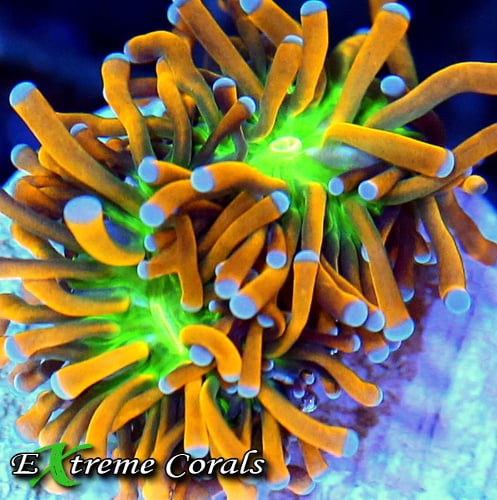
Care Requirements
Euphyllia corals prefer moderate flow and moderate to high light
conditions. They thrive in stable water parameters with alkalinity levels between 8 and 12 dKH, calcium levels
between 400 and 450 ppm, and magnesium levels between 1250 and 1350 ppm. Regular water changes and
supplementation with calcium and magnesium are essential for their health and growth.
Propagation
Euphyllia corals can be propagated by carefully fragging them into smaller pieces using a bone cutter or bandsaw.
Fragments should be allowed to heal in low flow and moderate light conditions before reintroducing them to the
main tank.
Unique Characteristics
Euphyllia corals have long, flowing tentacles with fluorescent tips, giving
them a mesmerizing appearance in the aquarium. They come in various color morphs, including green, pink, purple,
and gold, with some specimens exhibiting multiple colors within the same colony.
Acanthastrea
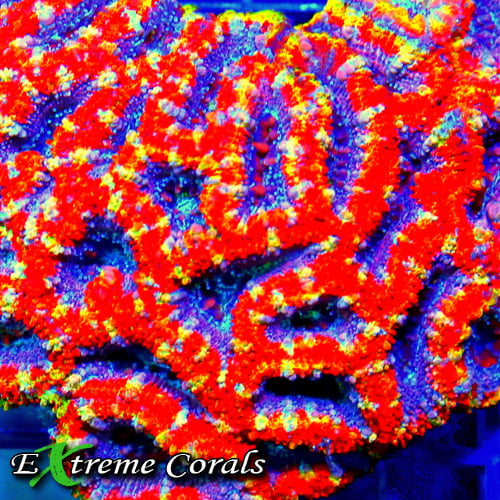
Care Requirements
Acanthastrea corals prefer moderate flow and moderate light conditions. While
they are tolerant of a wide range of water parameters, stable conditions are essential for their optimal health
and growth. Regular testing and monitoring of water parameters are recommended.
Propagation
Acanthastrea corals can be propagated by carefully chiseling or sawing them into smaller pieces.
Small Polyp Stony (SPS) Corals
Small polyp stony (SPS) corals
are known for their intricate skeletal structures and vibrant colors.
They
require intense lighting and stable water parameters to thrive, making them a challenge for intermediate to
advanced reef aquarists.
Acropora
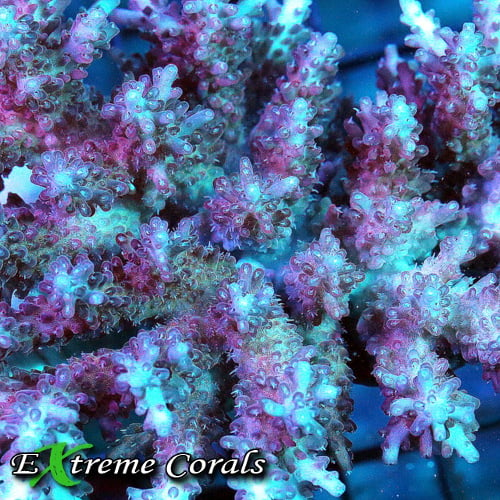
Care Requirements
Acropora corals require high flow and intense lighting
conditions, mimicking their natural habitat on shallow reef slopes. Water parameters must be meticulously
maintained, with alkalinity levels between 7 and 9 dKH, calcium levels between 380 and 450 ppm, and magnesium
levels between 1200 and 1350 ppm.
Propagation
Acropora corals can be propagated through fragmentation or by
allowing them to encrust on frag plugs or rocks. Fragments should be glued or wedged into place and provided
with optimal conditions for rapid growth.
Unique Characteristics
Acropora corals come in a wide range of
shapes, colors, and growth forms, including branching, tabling, and plating varieties. They are prized for their
rapid growth rates and stunning fluorescent pigments under intense lighting.
Montipora
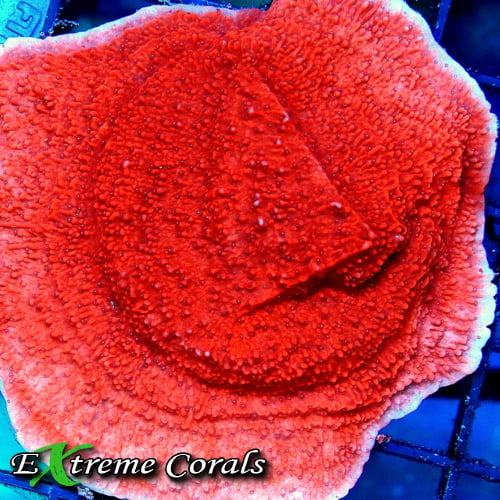
Care Requirements
Montipora corals thrive in moderate to high flow and intense lighting conditions.
Stable water parameters with alkalinity levels between 7 and 9 dKH, calcium levels between 380 and 450 ppm, and
magnesium levels between 1200 and 1350 ppm are essential for their growth and coloration.
Propagation
Montipora
corals can be propagated through fragmentation or by allowing them to encrust on frag plugs or rocks. Fragments
should be secured in place and provided with optimal conditions for rapid growth.
Unique Characteristics
Montipora corals exhibit a variety of growth forms, including encrusting, plating, and branching varieties. They
are prized for their vibrant colors, intricate patterns, and fast growth rates under ideal conditions.
Seriatopora (Bird's Nest Coral)
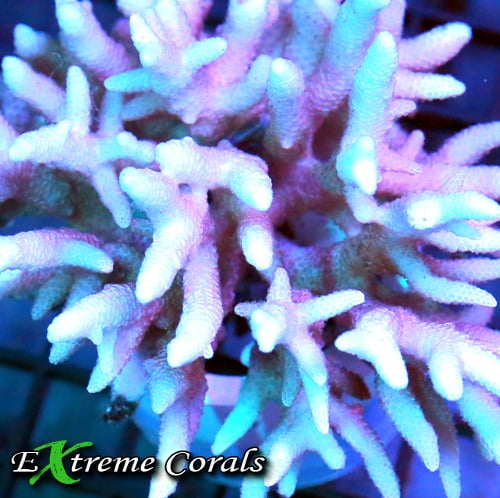
Care Requirements
Seriatopora corals prefer high flow and intense lighting
conditions, similar to Acropora species. Stable water parameters with alkalinity levels between 7 and 9 dKH,
calcium levels between 380 and 450 ppm, and magnesium levels between 1200 and 1350 ppm are crucial for their
health and growth.
Propagation
Seriatopora corals can be propagated through fragmentation or by allowing them
to encrust on frag plugs or rocks. Fragments should be secured in place and provided with optimal conditions for
rapid growth.
Unique Characteristics
Seriatopora corals are known for their delicate branches and vibrant
colors, including shades of green, pink, purple, and blue. They add a unique architectural element to reef
aquariums and thrive in well-established systems.
Care and Maintenance
Once you've selected the right corals
for your aquarium, it's essential to provide them with the care and maintenance they need to thrive. Here are
some key factors to consider:
Temperature
Maintain a stable temperature between 75°F and 82°F
(24°C to 28°C) using a reliable aquarium heater and thermometer.
Salinity
Keep salinity levels consistent at
around 1.025 specific gravity using a quality hydrometer or refractometer.
pH
Aim for a pH range of 8.1 to 8.4,
which can be monitored with a pH test kit.
Alkalinity, Calcium, and Magnesium
Regularly test and adjust
alkalinity (KH), calcium, and magnesium levels to ensure proper coral growth and skeletal development
Lighting
Choose lighting systems appropriate for the coral species in your aquarium, ranging from LED and T5 fluorescent
lights to metal halides. Adjust lighting intensity and spectrum to mimic natural sunlight conditions, providing
sufficient PAR (Photosynthetically Active Radiation) for photosynthesis.
Water Flow
Install wave makers,
powerheads, or circulation pumps to create turbulent water flow and prevent debris buildup. Adjust flow rates to
suit the needs of different coral species, ensuring adequate oxygenation and nutrient distribution.
Nutrient Levels
Monitor nitrate and phosphate levels to prevent excessive algae growth and maintain water quality.
Implement a balanced feeding regimen for corals, supplementing with phytoplankton, zooplankton, and
coral-specific foods as needed.
Regular Maintenance
Conduct regular water changes (10-20% every 1-2 weeks) to
replenish essential trace elements and remove accumulated waste. Clean filtration equipment, protein skimmers,
and other aquarium components to prevent nutrient buildup and maintain optimal water quality.
Disease Prevention
Quarantine new coral additions before introducing them to your main aquarium to prevent the spread
of diseases and parasites. Practice good hygiene and proper handling techniques to minimize stress and reduce
the risk of infection. By implementing these care and maintenance practices, you can create a stable and
thriving environment for your corals, promoting growth, vibrant colors, and long-term health.
Common Challenges and Troubleshooting
While caring for corals can be rewarding, it's essential to be prepared
for potential challenges and setbacks. Here are some common issues you may encounter and tips for
troubleshooting them
Algae Overgrowth
Cause
Excessive nutrients, poor water flow, or inadequate lighting can
contribute to algae proliferation.
Solution
Increase water flow, reduce nutrient levels through regular water
changes and efficient filtration, and adjust lighting intensity and spectrum to discourage algae growth.
Coral Bleaching
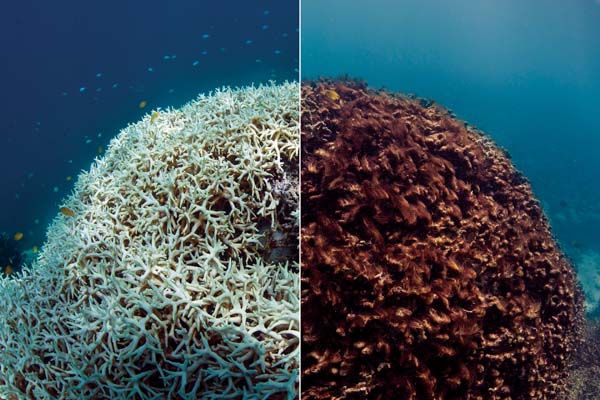
Cause
Coral bleaching occurs when corals expel their symbiotic algae (zooxanthellae) due to
stressors such as high water temperatures, excessive light, or changes in water chemistry.
Solution
Monitor and
maintain stable water parameters, provide adequate shading or reduce lighting intensity during periods of high
temperature, and avoid sudden changes in environmental conditions. Consider using cooling fans or chillers to
regulate water temperature.
Coral Tissue Necrosis
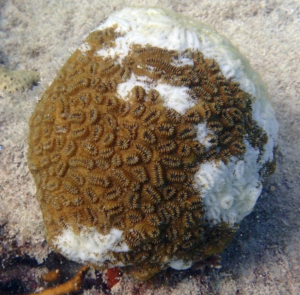
Cause
Coral tissue necrosis, also known as RTN (Rapid Tissue Necrosis) or STN (Slow
Tissue Necrosis), can result from physical damage, poor water quality, or bacterial infections.
Solution
Immediately remove affected corals from the tank to prevent the spread of infection. Quarantine and treat
affected corals with antibiotics or coral dips, and ensure optimal water quality and flow to promote healing.
Predatory Pests
The dazzling diversity on a polychaete family tree. 2011 K.J. Osborn. Compilation of images from Karen Osborn, Greg Rouse, Fredrik Pleijel, MBARI and Michael Aw
Cause
Predatory pests such as flatworms, nudibranchs, and bristle worms can prey on corals,
causing tissue damage and decline.
Solution
Inspect corals regularly for signs of pest infestation, such as
tissue loss, unusual growths, or visible pests. Remove pests manually, quarantine affected corals, and consider
implementing natural predators or chemical treatments to control pest populations.
Chemical Warfare
Cause
Some coral species release allelopathic chemicals to compete with neighboring corals
for space and resources, leading to tissue recession or death in nearby colonies.
Solution
Research and understand the compatibility of coral species before mixing them in the same aquarium. Provide
adequate spacing
between colonies to minimize chemical warfare, and consider using chemical filtration media or activated carbon
to remove allelopathic compounds from the water.
Equipment Failures
Cause
Malfunctioning or inadequate equipment such as heaters, pumps, or lighting fixtures
can disrupt water parameters and stress corals.
Solution
Regularly inspect and maintain aquarium equipment to
ensure proper functionality. Have backup equipment on hand in case of emergencies, and consider investing in
quality, reliable products from reputable brands.
By recognizing and addressing these common challenges promptly, you can safeguard the health and vitality of
your coral reef aquarium, ensuring a thriving ecosystem for years to come. Coral care in reef aquariums requires
dedication, knowledge, and attention to detail. By understanding the diverse needs of different coral types,
maintaining optimal water
parameters, implementing effective propagation techniques, and addressing
common challenges, you can create a stunning and sustainable coral reef ecosystem in your own home. Remember to
research each coral species thoroughly, provide appropriate lighting and flow conditions, and establish a
regular maintenance routine to promote coral health and growth. Be proactive in identifying and addressing any
issues that arise, and don't hesitate to seek advice from experienced reef aquarists or professional aquarium
specialists. With proper care and dedication, your reef aquarium can become a vibrant underwater paradise,
teeming with life and beauty. So dive in, explore the fascinating world of coral husbandry, and embark on an
unforgettable journey into the depths of the ocean from the comfort of your own home.
Coral Nutrition
Proper nutrition is essential for the health and vitality of corals in reef aquariums. While corals obtain some of
their energy through photosynthesis, they also require supplementary feeding to meet their nutritional needs.
The symbiotic algae known as zooxanthellae reside within coral tissues and harness sunlight to produce energy
through photosynthesis.
Corals rely on this process to obtain sugars and other organic compounds, which contribute to their growth and
survival. Providing adequate
lighting is crucial to support photosynthesis in corals. High-quality LED or metal halide lighting
systems with
appropriate spectrum and intensity are recommended to ensure optimal photosynthetic activity.
Feeding Strategies
While corals can derive energy from photosynthesis, they also benefit from feeding
on particulate matter and dissolved nutrients in the water column. Target feeding involves using a specialized
coral feeder to deliver small food particles, such as phytoplankton or zooplankton, directly to coral polyps.
This method ensures that corals receive essential nutrients without competition from other tank inhabitants.
Broadcast feeding involves adding liquid coral foods or powdered supplements to the aquarium water, allowing
corals to capture and consume suspended particles as they circulate through the tank. This method provides a
convenient way to supplement coral nutrition and promote overall health and growth.
Supplementary Foods:
Commercial coral foods, such as coral pellets, powders, and frozen preparations, are
available from aquarium stores and online retailers. These products are formulated to provide a
balanced diet
rich in proteins, vitamins, and minerals essential for coral health. Homemade coral foods can also be prepared
using natural ingredients, such as blended seafood, algae, and plankton. These DIY recipes offer a
cost-effective alternative to commercial products and allow aquarists to customize nutrient content based on the
specific needs of their corals.
Feeding Frequency:
The frequency of coral feeding depends on the species' nutritional requirements, tank
conditions, and feeding response. Some corals, such as LPS and soft corals, benefit from daily or frequent
feedings, while others, such as SPS corals, may require less frequent supplementation. Observing
coral feeding
behavior and response is crucial to determining the optimal feeding schedule. Overfeeding can lead to nutrient
buildup and water quality issues, so it's essential to strike a balance and adjust feeding frequency as needed.
By incorporating a variety of feeding strategies and providing a diverse diet, you can ensure that your corals
receive the nutrients they need to thrive and flourish in your reef aquarium..
Coral Fragging and Propagation:
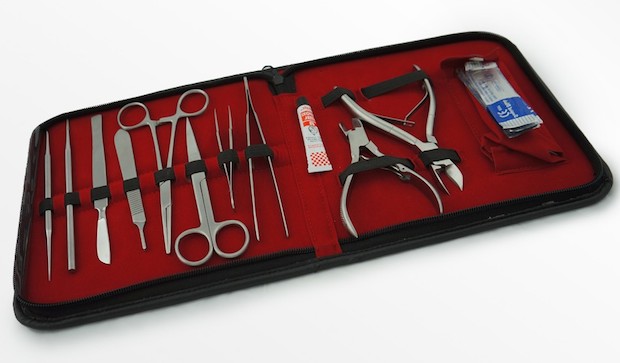
Coral fragging, or fragmentation, is the process of dividing a single coral colony into multiple
smaller pieces, or frags, for propagation and growth. This technique allows aquarists to propagate corals,
create new colonies, and share specimens with other hobbyists. Here's a step-by-step guide to coral fragging and
propagation:
Selecting Frag Candidates
Choose healthy, mature coral colonies with strong growth and vibrant
colors as frag candidates. Avoid fragging stressed or weakened corals, as they may not survive the process.
Preparing Fragging Tools
Gather the necessary fragging tools, including bone cutters, coral shears, razor
blades, and frag plugs or discs. Sterilize the tools with a coral dip or bleach solution to prevent
contamination and infection.
Fragging Techniques
For branching or encrusting corals, such as Acropora and
Montipora, use bone cutters or coral shears to carefully cut the colony into smaller fragments. Ensure clean,
straight cuts to minimize tissue damage and maximize healing potential. For soft corals and mushrooms, gently
tear or twist the colony to create frags. Avoid excessive force, as this can cause tissue tearing and stress.
Attaching Fragments
Once the frags are prepared, attach them to frag plugs or discs using cyanoacrylate glue or
epoxy putty. Position the frags securely on the plugs, ensuring good tissue contact and stability.
Healing and Growth
Place the newly fragged corals in a designated frag tank or area with stable water parameters, adequate
lighting, and gentle flow. Provide optimal conditions for healing and growth, including regular water changes
and supplementation as needed. Monitor the frags closely for signs of stress, tissue recession, or infection.
Adjust water flow and lighting intensity as necessary to promote healing and acclimation
Propagation Success
With proper care and attention, the fragged corals will begin to heal and encrust or
branch out over time. Once they have established a strong foothold on the frag plugs, they can be transferred to
the main display tank or shared with other aquarists. By mastering the art of coral fragging and propagation,
you can expand your coral collection, contribute to coral conservation efforts, and share the beauty of reef
aquariums with fellow hobbyists.
Coral Compatibility and Aquascaping
Creating a harmonious and visually appealing reef aquarium involves
careful consideration of coral compatibility and aquascaping techniques. By selecting compatible coral species
and arranging them thoughtfully within the tank, you can enhance the aesthetic appeal and functionality of your
reef ecosystem. Here are some tips for coral compatibility and aquascaping
Researching Coral Compatibility
Before adding corals to your aquarium, research their compatibility with other species based on factors such as
lighting, flow, aggression, and space requirements. Some corals may exhibit aggressive behaviors, such as
stinging tentacles or chemical warfare, which can harm neighboring colonies. Consider the growth forms and
territoriality of different coral species when planning your aquascape. Avoid placing aggressive corals near
more delicate or passive species to prevent competition and aggression.
Creating Microhabitats
Designate specific areas within the aquarium to create microhabitats tailored to the needs of different coral
species.
Group corals with similar lighting and flow requirements together to optimize their growth and coloration. Use
natural rock formations, ledges, and overhangs to create diverse habitats and provide shelter for fish and
invertebrates. Arrange corals at varying heights and depths to create depth and dimensionality in the aquascape.
Aquascaping Techniques
Experiment with different aquascaping techniques, such as the island, peninsula, or
wall-style layouts, to achieve your desired aesthetic vision. Balance open sand areas with rock structures and
coral colonies to create visually striking compositions. Consider the long-term growth and expansion of corals
when planning your aquascape. Leave ample space between colonies to accommodate growth and prevent overcrowding,
which can lead to competition and aggression.
Maintenance and Adaptation
Regularly assess and adjust your aquascape as corals grow and colonies expand.
Prune overgrown corals, trim encrusting algae, and reposition frags as needed to maintain balance and harmony
within the tank. Monitor coral growth and health regularly to identify any compatibility issues or overcrowding.
Be prepared to adapt and modify your aquascape to accommodate changing environmental conditions and coral
dynamics. By prioritizing coral compatibility and employing strategic aquascaping techniques, you can create a
stunning and sustainable reef aquarium that showcases the beauty and diversity of coral life.
Coral Health and Disease Prevention
Maintaining optimal coral health is essential for a thriving reef aquarium. While corals are
generally resilient, they can be susceptible to various diseases and health issues if proper care is not taken.
Here are some tips for promoting coral health and preventing common diseases: Quarantine Procedures: Quarantine
new coral additions before introducing them to your main display tank. This allows you to observe and monitor
their health and behavior while preventing the spread of potential diseases or parasites to established corals.
Quarantine tanks should have stable water parameters, adequate lighting, and filtration systems. Perform regular
water changes and monitor for signs of stress or disease during the quarantine period.
Water Quality Management
Maintain stable water parameters, including temperature, salinity, pH, alkalinity, calcium, and magnesium
levels. Fluctuations in water chemistry can stress corals and weaken their immune systems, making them more
susceptible to disease. Test water quality regularly using reliable test kits and equipment. Perform water
changes as needed to replenish essential nutrients and remove accumulated waste.
Proper Feeding and Nutrition
Provide corals with a balanced diet rich in proteins, vitamins, and minerals to
support growth and immune function. Supplemental feeding with coral foods, phytoplankton, and zooplankton can
help meet their nutritional needs. Avoid overfeeding, as excess nutrients can lead to water quality issues and
contribute to algae growth. Feed corals sparingly and observe their feeding response to determine the
appropriate feeding frequency.
Stress Reduction
Minimize stressors in the aquarium environment, such as sudden
changes in lighting, flow, or water chemistry. Acclimate new corals slowly to their new environment to reduce
the risk of stress-induced diseases. Maintain adequate water flow and circulation to oxygenate the water and
remove debris and waste. Ensure that corals have sufficient space and do not become overcrowded, which can lead
to competition and aggression.
Early Detection and Treatment
Monitor corals regularly for signs of stress,
disease, or pest infestation, including tissue discoloration, bleaching, lesions, or abnormal behavior. If you
suspect a coral is diseased, quarantine it immediately and consult with a knowledgeable aquarium professional or
veterinarian for diagnosis and treatment options. Implement appropriate quarantine and treatment protocols to
prevent the spread of disease to other tank inhabitants. By implementing these proactive measures and
prioritizing coral health and disease prevention, you can create a resilient and vibrant reef aquarium that
brings joy and beauty for years to come.
Coral Fragility and Resilience
While corals are known for their beauty and diversity, they are also vulnerable
to environmental stressors and anthropogenic threats. Understanding the factors that contribute to coral
fragility and resilience is essential for effective conservation and management efforts.
Here's a closer look at the challenges facing coral reefs and strategies for promoting their resilience:
Climate Change Impacts
Rising sea temperatures, ocean acidification, and extreme weather events associated with climate change pose
significant threats to coral reefs worldwide. Elevated water temperatures can cause coral bleaching, a
phenomenon where corals expel their symbiotic algae and become more susceptible to disease and mortality. To
mitigate the impacts of climate change on coral reefs, global efforts to reduce greenhouse gas emissions and
limit temperature rise are essential. Additionally, local measures such as marine protected areas, habitat
restoration, and sustainable fisheries management can help enhance coral resilience and facilitate recovery.
Pollution and Runoff
Pollution from land-based sources, including agricultural runoff, sewage discharge, and
industrial waste, can introduce excess nutrients, sediments, and pollutants into coastal waters, leading to
coral stress and degradation. Nutrient enrichment can fuel algal overgrowth, while sedimentation can smother
coral reefs and inhibit their growth and reproduction. Implementing best management practices to reduce
pollution runoff and improve water quality is critical for coral reef conservation. Strategies such as buffer
zones, stormwater management, and wastewater treatment can help minimize the impacts of pollution on coral
ecosystems and promote their resilience to environmental stressors.
Overfishing and Destructive Fishing Practices
Overfishing, destructive fishing practices, and habitat degradation threaten coral reef ecosystems by
disrupting ecological balance, depleting key fish populations, and damaging coral habitats. Unsustainable
fishing practices, such as blast fishing, cyanide poisoning, and bottom trawling, can cause direct physical
damage to coral reefs and reduce their resilience to other stressors. Establishing marine protected areas,
implementing sustainable fisheries management strategies, and promoting alternative livelihoods for coastal
communities can help alleviate pressure on coral reef ecosystems and support their long-term health and
resilience.
Invasive Species and Coral Disease
Invasive species, such as crown-of-thorns starfish and predatory
snails, can prey on corals and compete with native species for resources, leading to declines in coral cover and
diversity. Coral diseases, caused by bacteria, fungi, and viruses, can spread rapidly through reef ecosystems
and cause mass mortality events. Early detection and rapid response measures, including targeted removal of
invasive species and quarantine protocols for diseased corals, are essential for preventing the spread of
invasive species and controlling outbreaks of coral disease. Research into disease ecology, host-pathogen
interactions, and coral immune responses can also inform effective management strategies.
Community Engagement and Conservation Education
Engaging local communities, stakeholders, and decision-makers
in coral reef conservation efforts is critical for achieving long-term sustainability and resilience. Education
and outreach programs can raise awareness about the importance of coral reefs, build support for conservation
initiatives, and empower individuals to take action to protect their local marine environments. Supporting
community-based conservation initiatives, fostering partnerships between governments, NGOs, and academia, and
integrating traditional ecological knowledge into management plans can help build social resilience and adaptive
capacity in coral reef-dependent communities. By addressing these challenges and implementing holistic
management approaches that consider ecological, social, and economic factors, we can enhance the resilience of
coral reef ecosystems and ensure their continued survival for future generations to enjoy.
Coral Reef Restoration and Rehabilitation
Coral reef restoration and rehabilitation efforts play a crucial role in
preserving and restoring degraded coral reef ecosystems. These initiatives aim to enhance coral resilience,
promote biodiversity, and rebuild ecosystem functions through targeted interventions and community engagement.
Here's a closer look at coral reef restoration techniques and their implications for reef conservation:
Coral Propagation and Transplantation
Coral propagation and transplantation involve culturing coral fragments in
nurseries and transplanting them onto degraded reef substrates to promote coral growth and recovery. This
technique can help replenish coral populations, increase genetic diversity, and restore ecosystem structure and
function. Coral nurseries use a variety of methods, including fragmenting donor colonies, attaching fragments to
substrate or artificial structures, and maintaining optimal environmental conditions to promote coral growth and
survival. Once corals reach a suitable size, they are transplanted onto degraded reef sites using biodegradable
substrates or cement.
Artificial Reef Construction
Artificial reef construction involves deploying structures,
such as concrete modules, steel frames, and sunken ships, to create habitat complexity and enhance coral
recruitment and colonization. These artificial reefs provide substrate for coral settlement, refuge for marine
life, and recreational opportunities for divers and snorkelers. Careful site selection, materials selection, and
design considerations are essential for the success of artificial reef projects. Monitoring and adaptive
management are also necessary to evaluate reef performance, address potential impacts, and optimize habitat
suitability for target species.
Assisted Evolution and Genetic Manipulation
Assisted evolution and genetic
manipulation techniques aim to enhance coral resilience to environmental stressors, such as climate change and
disease, by selecting for traits associated with thermal tolerance, disease resistance, and growth rate. These
approaches may involve selective breeding, genetic engineering, or assisted gene flow to introduce beneficial
alleles into coral populations. Ethical considerations, regulatory frameworks, and public acceptance are
important considerations when implementing assisted evolution and genetic manipulation techniques. Transparency,
stakeholder engagement, and risk assessment are essential for ensuring the responsible and ethical use of these
technologies in coral reef conservation.
Ecosystem-based approaches to coral reef restoration focus on enhancing ecosystem
resilience and functionality through holistic management strategies that consider the interactions between
corals, fish, algae, and other reef organisms. These approaches may involve habitat protection, marine spatial
planning, and integrated coastal zone management to address multiple stressors and enhance reef resilience.
Community participation, capacity building, and traditional knowledge integration are critical for the success
of ecosystem-based restoration initiatives. By empowering local stakeholders to take ownership of conservation
efforts and incorporate traditional ecological knowledge into management practices, we can build resilient and
adaptive coral reef ecosystems that can withstand future challenges. By investing in coral reef restoration and
rehabilitation efforts, we can support the recovery of degraded reef ecosystems, conserve biodiversity, and
protect the valuable ecosystem services provided by coral reefs. Together, we can ensure the continued survival
and resilience of these iconic and ecologically significant marine habitats for generations to come. In
conclusion, coral reef conservation and restoration are essential for protecting the biodiversity, ecological
integrity, and cultural significance of these valuable marine ecosystems. By addressing the root causes of coral
reef decline, implementing sustainable management practices, and engaging local communities in conservation
efforts, we can safeguard the health and resilience of coral reefs for future generations to enjoy. Through
collaborative research, innovative technologies, and community-driven initiatives, we can overcome the
challenges facing coral reefs and pave the way for their recovery and rejuvenation. By working together to
promote coral resilience, reduce anthropogenic impacts, and foster stewardship of our oceans, we can ensure the
continued survival and prosperity of these magnificent underwater worlds for years to come.
overall rating:
my rating:
log in to rate
Please log in to leave a comment.
For more information visit: additional resources

